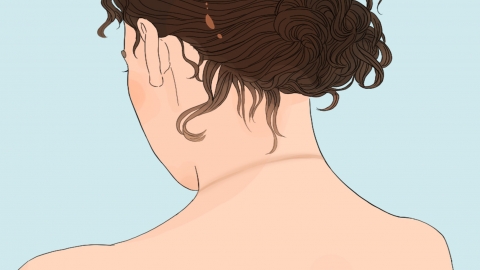Which method is most suitable for removing neck wrinkles?
There is generally no definitive answer to "which method is most suitable for removing neck wrinkles," as neck wrinkles may be related to aging, obesity, genetic factors, sun exposure, and improper skincare. Common methods for reducing neck wrinkles include using skincare products, exercise, hyaluronic acid injections, microneedling, and autologous fat transfer. The analysis is as follows:

1. Aging: With increasing age, skin cells gradually age, leading to reduced subcutaneous collagen, moisture loss, and thinning of fat layers, which can cause skin to fold and sag, forming noticeable wrinkles. It is recommended to use skincare products containing anti-aging ingredients, such as neck creams or serums containing retinol, collagen, and vitamin C.
2. Obesity: Individuals with higher subcutaneous fat may develop irreversible skin texture changes in folded areas due to prolonged skin compression and folding. It is recommended to improve this condition through exercise, such as running or swimming.
3. Genetic factors: Neck wrinkles may be related to heredity; if parents have noticeable neck wrinkles, their children may also be more likely to develop them. Hyaluronic acid or collagen injections through procedures like hyaluronic acid filler injections can be performed to plump up the local skin and reduce the appearance of wrinkles. The typical reference price for hyaluronic acid injections is 2000-3000 yuan per session, with visible improvement possibly occurring after 7 days. However, there are certain risks, such as redness and pain.
4. Sun exposure: Prolonged UV exposure on the neck skin may accelerate cellular aging and lead to wrinkle formation. Microneedling is recommended, using tiny needles to create microchannels on the neck skin, stimulating the skin's natural repair mechanisms and promoting collagen and elastic fiber production. The typical reference price for microneedling ranges from 1000-2000 yuan per session, with improvement potentially visible after 2-4 months, although pain may commonly occur.
5. Improper care: Failure to use skincare products or living in a dry environment may cause skin moisture evaporation and cellular dehydration, accelerating aging and leading to neck wrinkles. Autologous fat transfer at a reputable hospital may be considered, whereby fat is extracted from another part of the body, processed, and then injected into the neck wrinkles to provide structural support. The typical reference price for autologous fat transfer varies from 10,000 to 50,000 yuan per session, with visible improvement potentially occurring after 2-3 weeks, although there is a risk of postoperative infection.
In daily life, it is important to avoid prolonged periods of looking down to reduce pressure and stretching on the neck skin.




